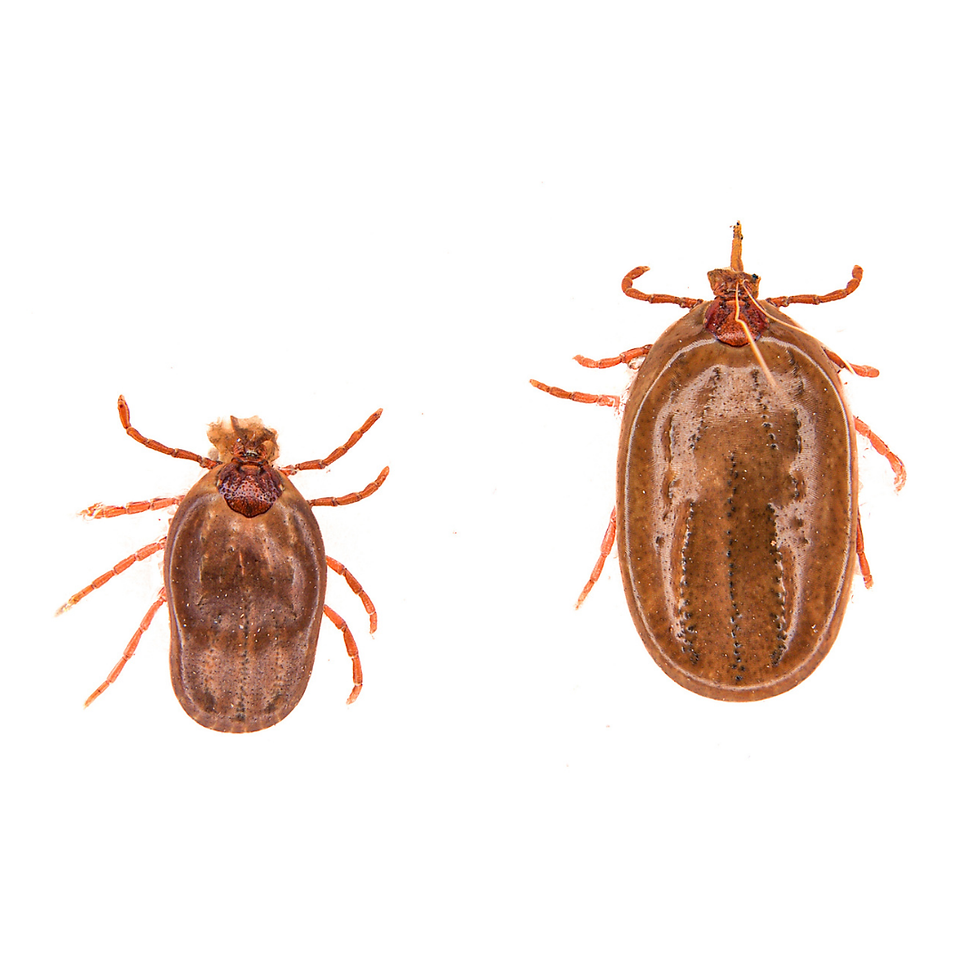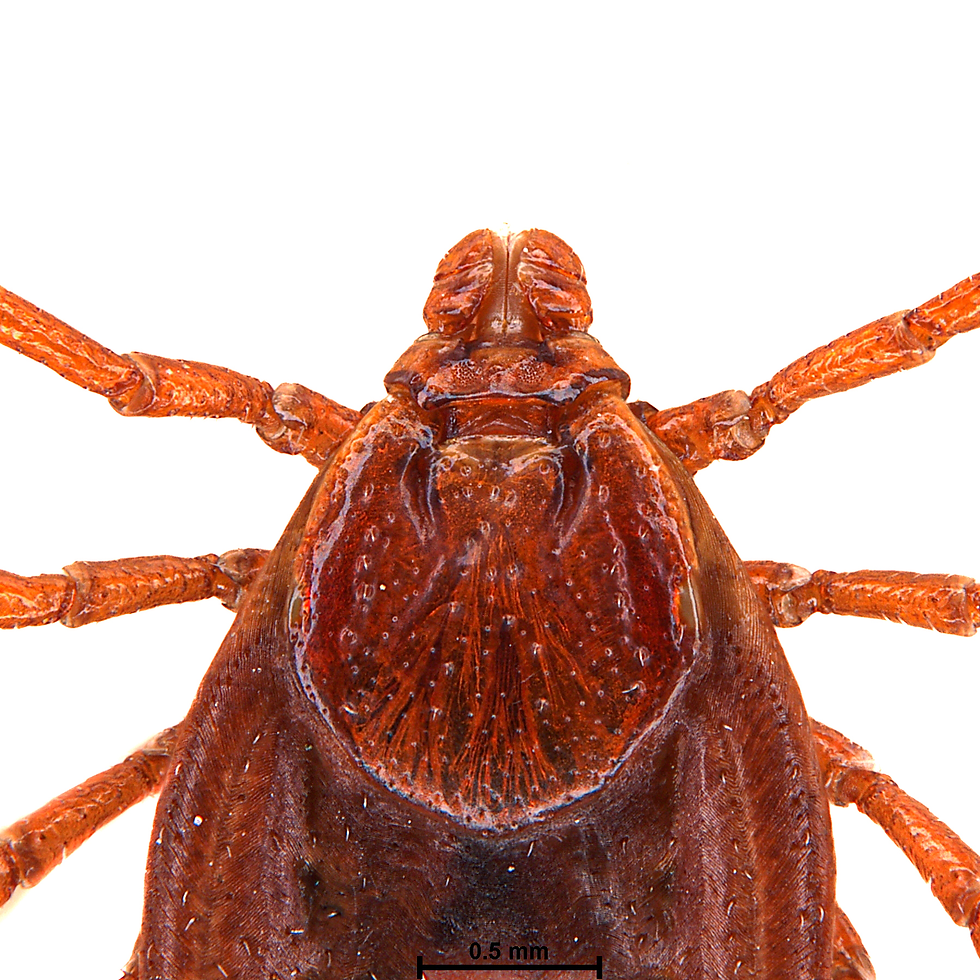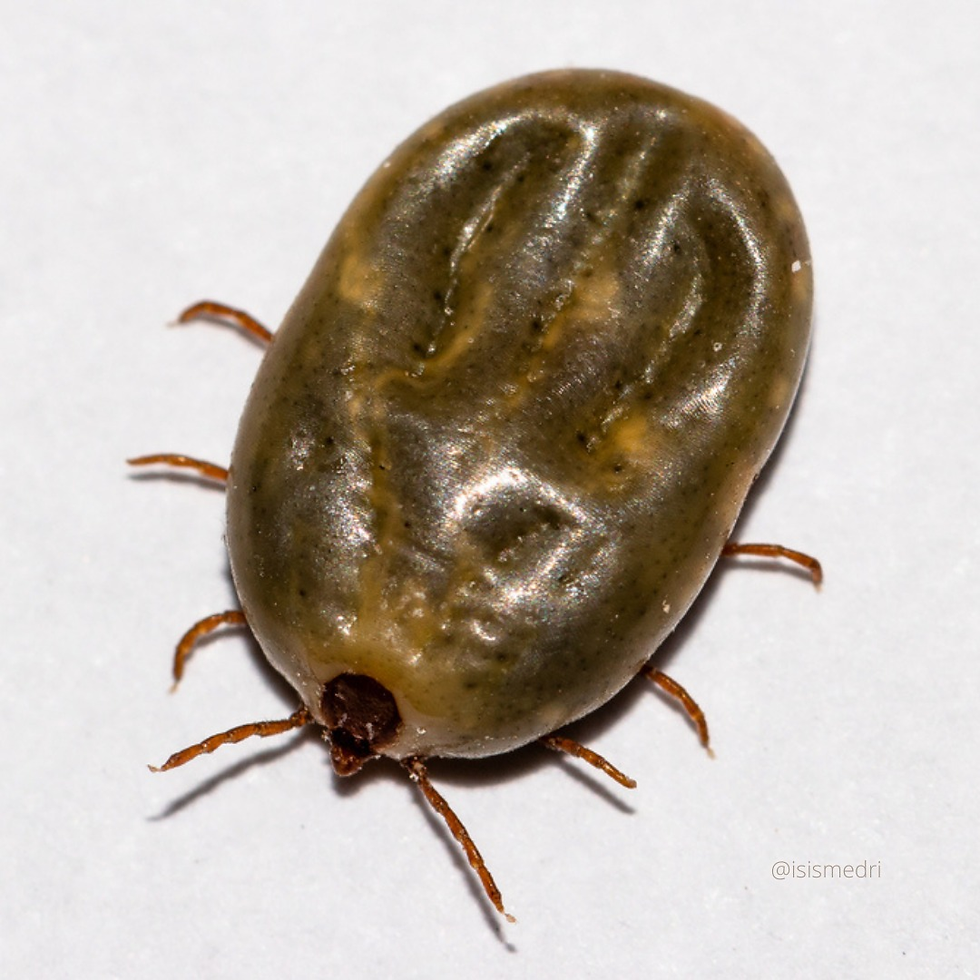Specimen Showcase | Hello Gorgeous!
- Hong Kong Biodiversity Museum

- Mar 13
- 3 min read
𝘙𝘩𝘪𝘱𝘪𝘤𝘦𝘱𝘩𝘢𝘭𝘶𝘴 𝘴𝘢𝘯𝘨𝘶𝘪𝘯𝘦𝘶𝘴 (Latreille, 1806), better known as the brown dog tick, is easily identified by most people, especially dog owners, as a parasite potentially causing clinical illness in domestic dogs🐕. However, do you know the reasons why this species is so common?

Unlike some other parasites like fleas and bed bugs, ticks are not insects. They belong to the class Arachnida, which also includes spiders, scorpions, harvestmen or mites (ticks being a particular order of parasitiformes mites), among others🕷. All adult ticks have four pairs of legs (versus the larvae that can have only 3) and a structure called chelicerae which corresponds to their mouthparts being used to pierce the host’s skin and then get blood🩸. Among all tick species, 𝘙. 𝘴𝘢𝘯𝘨𝘶𝘪𝘯𝘦𝘶𝘴 has the widest geographical distribution covering tropical and subtropical regions, and even some temperate regions. The adult males of 𝘙. 𝘴𝘢𝘯𝘨𝘶𝘪𝘯𝘦𝘶𝘴 measure about 2 to 3 mm in length and 0.5 mm in width. The female adults, however, can become 50 to 100 times larger when they are fully engorged with blood; which is about the size of a raisin🍇.

Strangely enough, although some people may think that a parasite should spend most of its lifetime on the host, ticks that belong to the family ixodidae (including 𝘙. 𝘴𝘢𝘯𝘨𝘶𝘪𝘯𝘦𝘶𝘴) actually undergo one-host, two-host or three-host life cycles. As the names suggest, the number of hosts they remain on throughout their lifetime is different, hence the time they spend on the hosts are different. For instance, 𝘙. 𝘴𝘢𝘯𝘨𝘶𝘪𝘯𝘦𝘶𝘴 undergoes three-host life cycles, meaning each of its life stages (i.e. the larvae, nymphs and adults) requires a new host to feed on, which are not necessarily the same individuals nor the same species. Therefore, it has to detach frequently from the host and spent its lifetime freely in an environment where it faces potential threats from predators and adverse weather conditions.
In its three-host life cycles, 𝘙. 𝘴𝘢𝘯𝘨𝘶𝘪𝘯𝘦𝘶𝘴 usually prefers feeding on the blood of domestic dogs🐕but they would occasionally feed on the blood of other animals including rabbits, cats, birds and even humans. It is deemed to originally parasite burrowing carnivores, like foxes🦊and mustelids (e.g., weasels, badgers, etc.) before the domestication of dogs (and for those to become an abundant and common source of food).

So where do they live when they are not attached to the skin of their host? In the case of 𝘙. 𝘴𝘢𝘯𝘨𝘶𝘪𝘯𝘦𝘶𝘴 they mainly have a preference for habitats close to human settlements, with individuals hiding in enclosed spaces such as ground burrows, rock crevices🧱in suburban areas, and within carpets, wall cracks or furniture within urban areas. Occasionally, they can also inhabit more natural habitats preferring humid areas. The secret to the strong adaptability of 𝘙. 𝘴𝘢𝘯𝘨𝘶𝘪𝘯𝘦𝘶𝘴 to live in a wide range of habitats is due to its ability to suppress the rate of water loss. It is evident that 𝘙. 𝘴𝘢𝘯𝘨𝘶𝘪𝘯𝘦𝘶𝘴 can store water through the absorption of water vapour directly from the air and drink free water when they are not on the host💧. Combined with its preference to remain in enclosed space, its water conservation ability provides it with better protection against dry environments.

Even more extraordinary, 𝘙. 𝘴𝘢𝘯𝘨𝘶𝘪𝘯𝘦𝘶𝘴 is a champion of fasting. Indeed, larvae and nymphs can survive about eight and six months respectively under unfavourable conditions without food, while unfed adults can survive up to 19 months!! Just imagine yourself without food for 19 hours🤢, so 19 months!
There are many more fascinating adaptations to learn about this small species. If you want to know more about it and observe it without sharing some of your blood, visit the HKBM, the tick specimen and other amazing parasites that we have.
Text: Jacky Sung




Comments